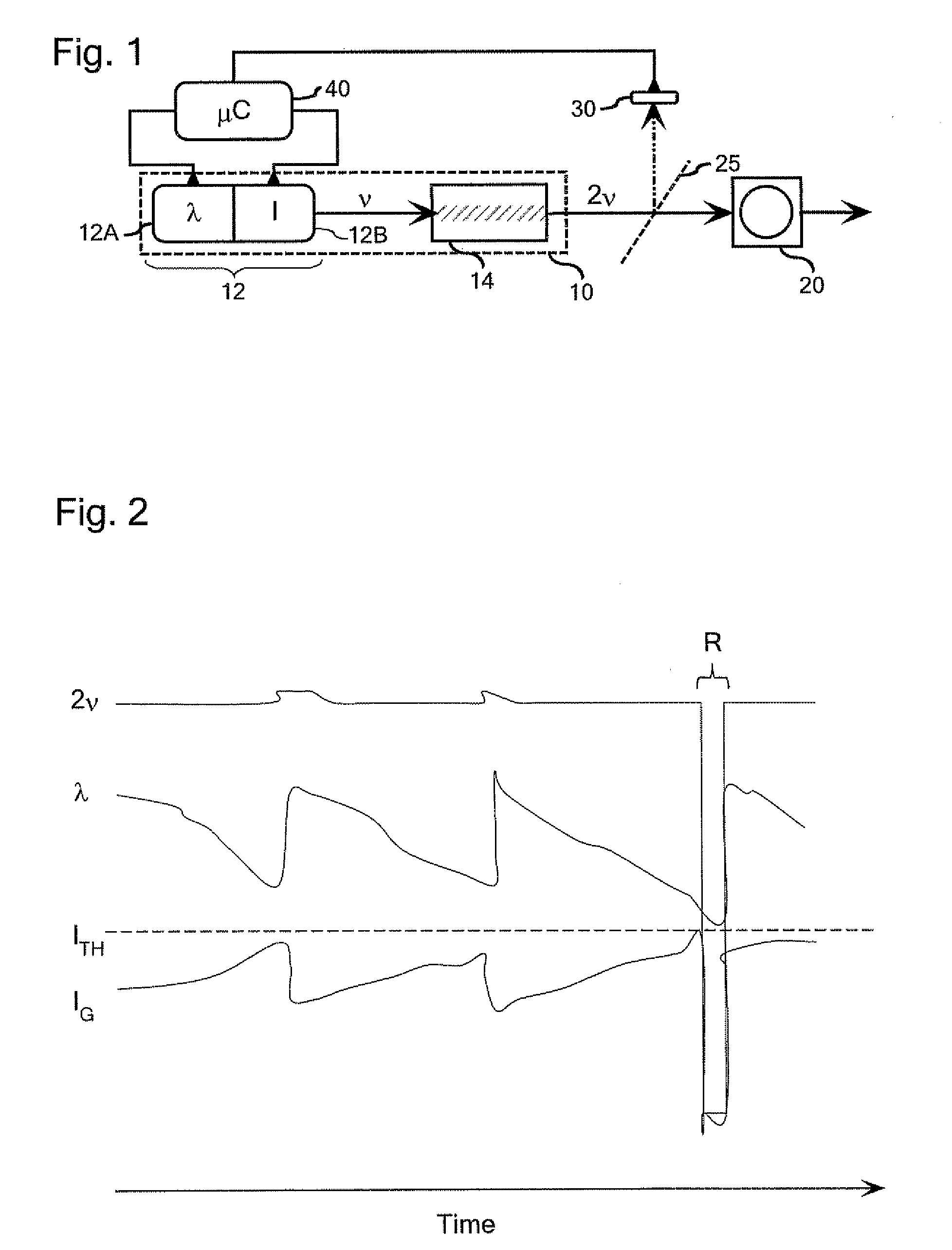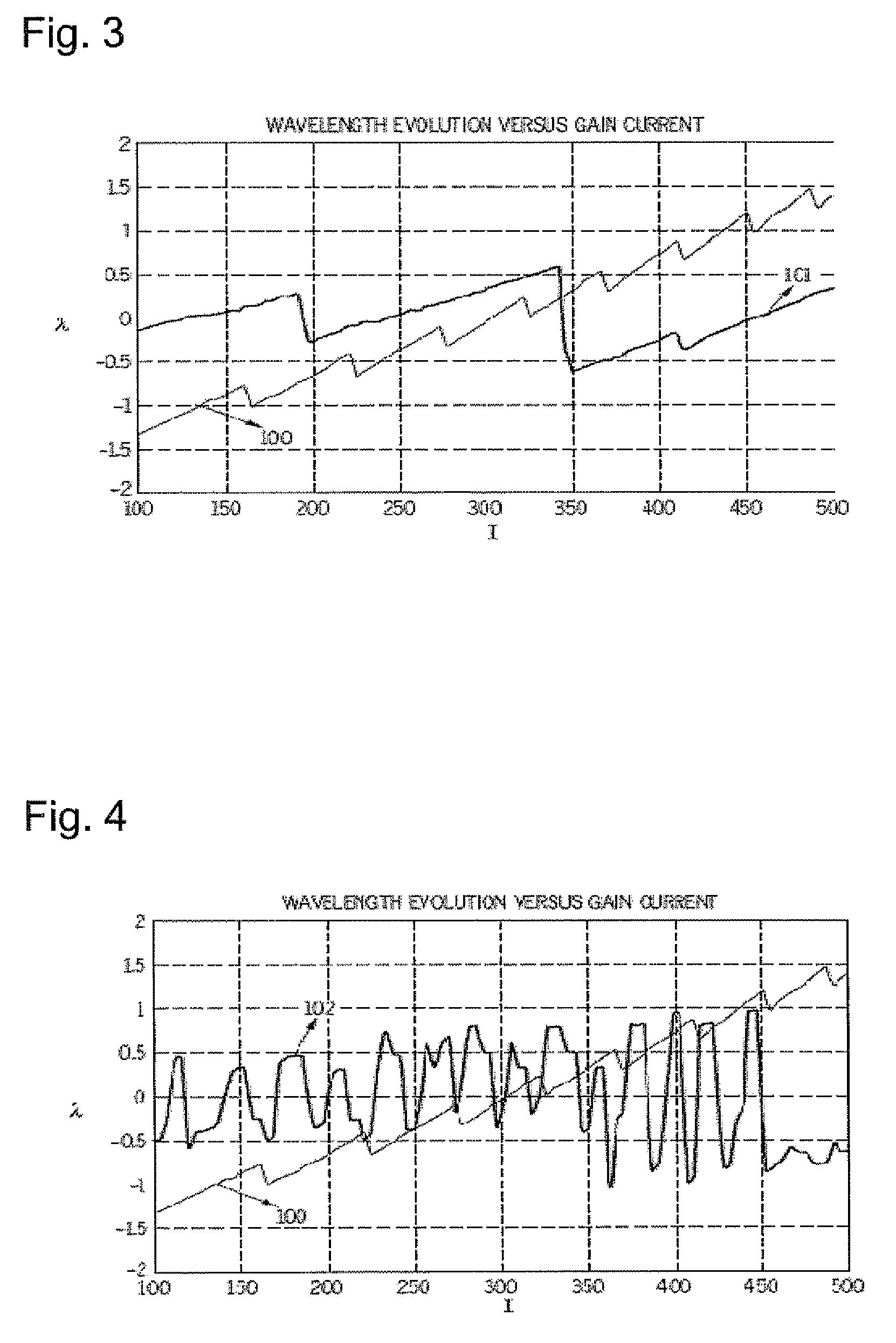Minimizing Power Variations In Laser Sources
a technology of laser source and power variation, which is applied in the field of semiconductor lasers, can solve the problems of green power change, output power variation, and color balance errors of projected images, and achieve the effect of narrowing the wavelength fluctuations of semiconductor lasers and minimizing laser wavelength variations in semiconductor lasers
- Summary
- Abstract
- Description
- Claims
- Application Information
AI Technical Summary
Benefits of technology
Problems solved by technology
Method used
Image
Examples
Embodiment Construction
[0021]Referring to FIG. 1, the concepts of the present invention may be conveniently illustrated with general reference to a laser source 10 comprising a two-section DBR-type semiconductor laser 12, although the concepts of the present invention can be executed in the context of various types of semiconductor lasers, the design and operation of which is described generally above and is taught in readily available technical literature relating to the design and fabrication of semiconductor lasers. In the context of a frequency-doubled light source of the type illustrated in FIG. 1, the DBR laser 12 is optically coupled to a light wavelength conversion device 14. The light beam emitted by the semiconductor laser 12 can be either directly coupled into the waveguide of the wavelength conversion device 14 or can be coupled through collimating and focusing optics or some other type of suitable optical element or optical system. The wavelength conversion device 14 converts the incident lig...
PUM
 Login to View More
Login to View More Abstract
Description
Claims
Application Information
 Login to View More
Login to View More - R&D
- Intellectual Property
- Life Sciences
- Materials
- Tech Scout
- Unparalleled Data Quality
- Higher Quality Content
- 60% Fewer Hallucinations
Browse by: Latest US Patents, China's latest patents, Technical Efficacy Thesaurus, Application Domain, Technology Topic, Popular Technical Reports.
© 2025 PatSnap. All rights reserved.Legal|Privacy policy|Modern Slavery Act Transparency Statement|Sitemap|About US| Contact US: help@patsnap.com



